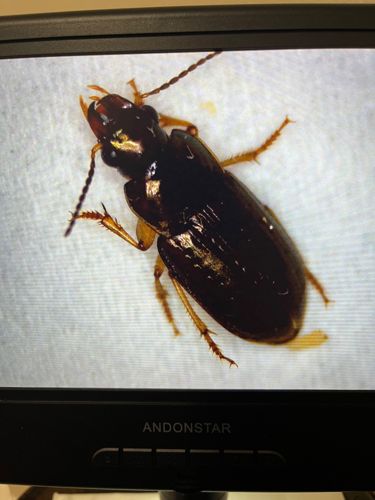Ground Beetle
Scientific Name: Carabidae (family)
Order & Family: Order: Coleoptera, Family: Carabidae
Size: Most ground beetles range from 2 mm to 35 mm (approximately 0.08 to 1.4 inches) in length, though some species can be larger.

Natural Habitat
Ground beetles are found in a wide variety of habitats, including gardens, forests, fields, and even urban areas. They are typically found under logs, stones, leaf litter, and other debris, as well as in soil.
Diet & Feeding
The majority of ground beetles are predatory, feeding on a wide range of invertebrates such as slugs, snails, caterpillars, maggots, and other insect larvae. Some species are omnivorous, consuming both animal matter and plant seeds, while a few are strictly herbivorous.
Behavior Patterns
Ground beetles are primarily nocturnal, hunting for prey at night. They are typically fast runners and can move quickly when disturbed. Many species are flightless, but winged species are also common. They undergo complete metamorphosis, with egg, larval, pupal, and adult stages.
Risks & Benefits
Ground beetles are largely beneficial insects, especially in agricultural and garden settings, as they help control populations of various pest insects and slugs, reducing the need for chemical pesticides. They pose no direct risks to humans, as they do not bite or sting and are not known to transmit diseases. While some species might occasionally enter homes, they are not considered structural pests.
Identified on: 9/3/2025